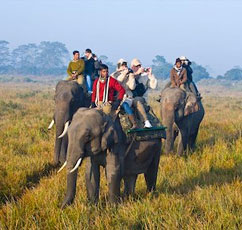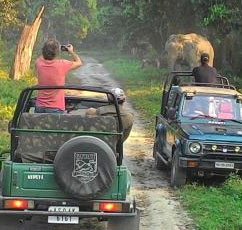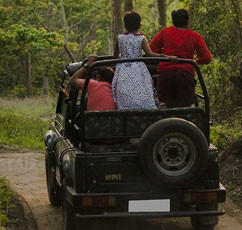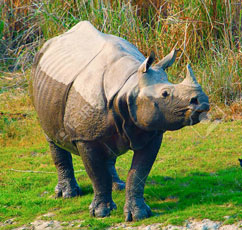Flora of Kaziranga National Park
Mainly four types of vegetation exist in the Kaziranga National Park. These are categorized into alluvial inundated grasslands, alluvial savanna woodlands, tropical moist mixed deciduous forests and tropical semi-evergreen forests. According to Landsat data collected in the year 1986, percentage coverage of vegetation is depicted as – 41 per cent tall grasses, 11 per cent short grasses, 29 per cent open jungle, swamps 4 per cent, and water and river bodies 8 per cent and sand area 6 per cent.
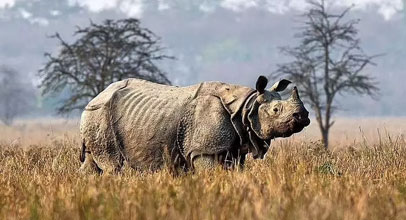
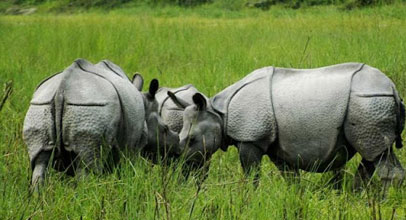
Due to different altitude between the eastern and western areas; the western side of the park are dominated by grasslands. Higher ground areas are bestowed with tall elephant grass while short grasses cover the lower grounds of the park. Certain reasons like annual flooding, grazing by herbivores, and controlled burning maintain and keep the fertility of grasslands up. Common tall grasses include spear grass, elephant grass, and sugarcane grass. Several kinds of forbs are found along with the grasses. Some of the dominant species providing cover and shade are scattered trees and that include Indian gooseberry, Kumbhi, the cotton tree and elephant apple.
Types of Trees
Above all the thick evergreen forests in the proximity of the the Kanchanjhuri, Panbari, and Tamulipathar blocks, include trees such as Aphanamixis polystachya, Dillenia indica, Talauma hodgsonii, Garcinia tinctoria, Ficus rumphii, Cinnamomum bejolghota, and species of Syzygium. Tropical semi-evergreen forests are present near Baguri, Bimali, and Haldibari. Common trees and shrubs are Albizia procera, Lagerstroemia speciosa, Crateva unilocularis, Duabana grandiflora, Sterculia urens, Grewia serrulata, Mallotus philippensis, Bridelia retusa, Aphania rubra, Leea umbraculifera, and Leea indica.
Kaziranga National Park is also equipped with aquatic floras in the lakes and ponds and along the river shores. The invasive water hyacinth is very common, often choking the water bodies, but it is cleared during destructive floods. Another interfering species, Mimosa invisa, which is toxic to herbivores, was cleared by Kaziranga staff with help from the Wildlife Trust of India in 2005.
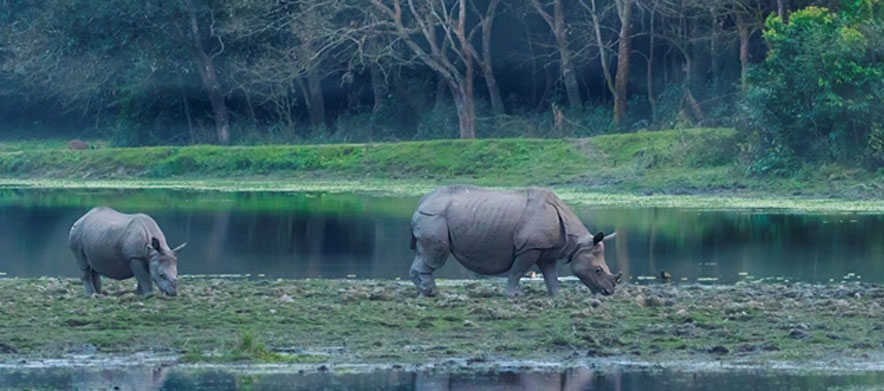
The floristic composition of the Kaziranga National Park comprises of following forest types and biomes :
| Sl. No. | Land & Cover Type | Area (Sq. KM) | % Area |
| 1. | Woodland | 114.01 | 27.95 |
| 2. | Short Grass | 12.30 | 3.01 |
| 3. | Tall Grass | 248.85 | 61.01 |
| 4. | Beels | 24.32 | 5.96 |
| 5. | Jiya Daphlu | 3.96 | 0.97 |
| 6. | Mora Diphlu | 2.84 | 0.70 |
| 7. | Sand | 1.62 | 0.40 |
| Total | -- | 407.90 | 100.0 |






